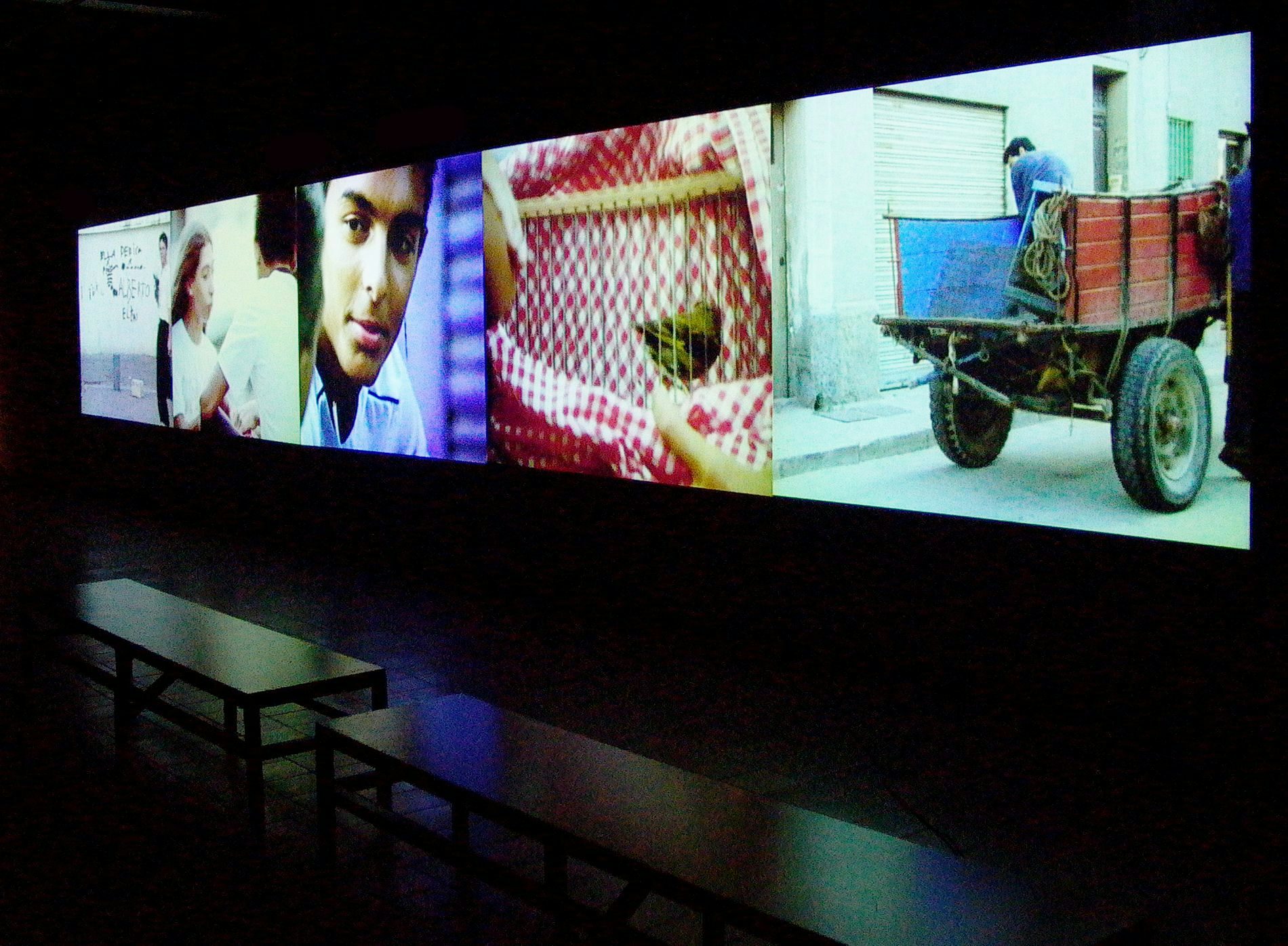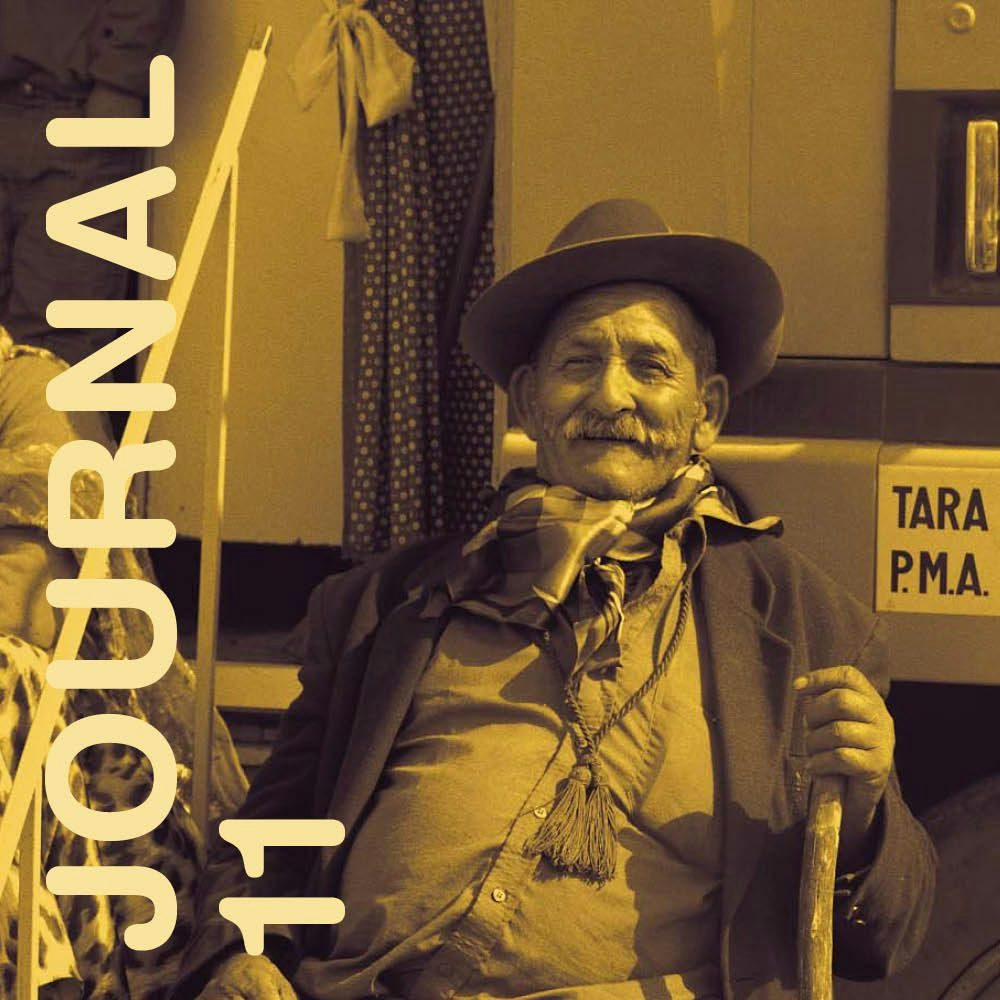
Hannah Collins
2004.10.11 - 12.11
VINCENT LAVOIE
Already in 1985, when she made imposing prints of World War Two archival images and thereby initiated a reflection on the photographic and architectural vestiges of contemporary history, Hannah Collins had begun to explore the poetic and historiographic potential of bringing period documents into the present day. Since then, the British-born artist, whose photographic work appears to be impermeable to the prescriptions of the decisive moment, continues to privilege representations of duration and to plumb the temporal depths of things and the memorial density of the world. Time, or rather the course of time, to use the title of one of her series of photographs (In the Course of Time, 1994-96), and the social, economic, and cultural effects of events and not scoops, the privileged credo of news photography, are what her images depict. Not the events linked to a specific news event but the consequences of history: the remnants of a Polish factory, the area around Auschwitz, an abandoned Jewish cemetery, the refuse from a Turkish tannery–even the decay of architectural functionalism, as seen in the work La Mina (2001-03), the work on exhibit here.
This film, shot in 35 mm over a period of 23 days in La Mina, a residential complex built in 1973 under Franco as a Gypsy settlement on the outskirts of Barcelona, and projected in staggered fashion on five screens, is made up of scripted and improvised scenes involving the area’s inhabitants. The choice of 35 mm, logistically more complex than digital video, conveys the artist’s desire to render the act of representation sensitive in order to attract the community’s attention, adhesion, and participation. This is the social and anthropological element of the work, which was developed like a collective event. Hannah Collins’ work is diametrically opposed to images taken on the run. It takes root in the situations she observes: a former actor in spaghetti westerns mediates a dispute; a teenager dreams of becoming an actor, a man collects industrial waste, while another, confined to a wheelchair, sings his cante hondo, or deep song. This flamenco song, with its repetition, refrains, and modulation, found its highest expression in the voice of Camaron, the famous Gypsy singer of the 1970s and 80s. Camaron’s incantations, sublime expressions of Gypsy memory, are immortalised in stone under a bust in one of the squares of La Mina. Behind this bust, we can see, like a grotesque historical counterpoint, the complex’s sinister buildings. The visual telescoping of this bust and these buildings, albeit contemporary, expresses in its entirety the contradiction arising from the head-on collision between a monument, the emblem of a singular cultural tradition, and a form of architecture which is the authoritarian expression of a forced settlement.

La Mina is an extension of Hannah Collins’ previous photographic work, particularly that work in which the constructed environment is represented in light of cultural transmutations. Consider, for example, the image The Hunter’s Space (1995) from the series In the Course of Time, which depicts an improvised Gypsy camp made out of refuse of all kinds. In the background, like a painted backdrop, a forest borders the site, which looks more like a municipal dump than a campground. Despite the site’s disorderly appearance, it preserves some of the basic principles of Gypsy social life, such as the separation of public and private space. Roadways have been created and the shacks are equipped with windows, doors, chimneys and even something resembling a back yard, where garbage is tossed. The attributes of domestic architecture and public spaces have been reproduced according to the model of propriety that governs the use of land and buildings. The right to property, which is to say the “right of occupancy”, derives in this case from the recovery of what are undoubtedly poor materials (pieces of plywood, cardboard, plastic sheeting, etc.). Nevertheless, they have a certain use value. In the same way, one of the chapters of La Mina, shot beyond the complex, opens on a series of chabolas, jerry-rigged dwellings made out of recycled materials which reproduce, after a fashion, the canonical forms of domestic architecture. Refuse can thus become architecture, or at least shelter, screen, or rampart, the site of the final retrenchment of privacy.
Kurt Schwitters, in a famous text describing the founding of Merz after the Great War, emphasised the use value of refuse: “It is also possible to create using garbage and this is what I do when I glue and nail things together. . . . In any event, everything had fallen apart, and we had to make new things out of refuse”.1 Today garbage is, above all, an expression of the way the social fabric has been rent and a symptom of cultural ostracism, which Hannah Collins continues to combat.
Like a kaleidoscope, in which colours and patterns cross and collide, Hannah Collins’ work modulates the episodes of history, compresses and distends them, as if under the influence of a secret pulsation. Her entire work is marbled with heterogeneous time, irrigated with multi-polar narratives, and flecked with secular speech. This is where all the complexity and soundness of Hannah Collins’ work can be found: in the temporal and cultural intrications that she brings to light by unveiling the memories we retain and liberating the memories we have preserved.